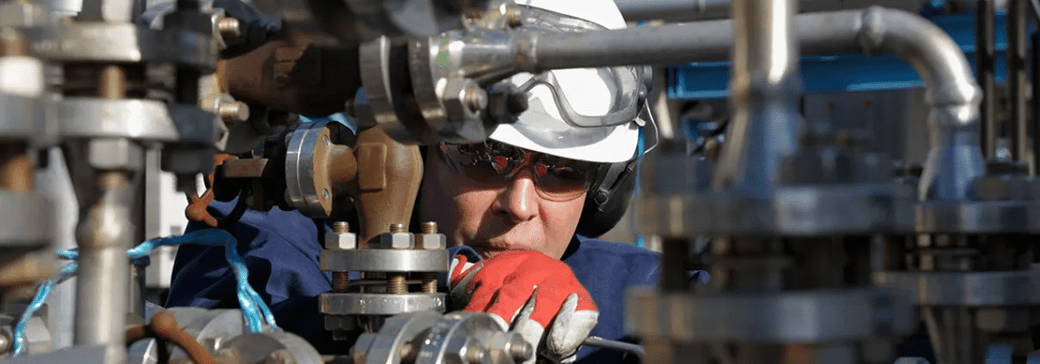This article provides an overview of Quality Surveillance (QS) Assignments (QSAs) for capital projects, focusing on how inspection roles, QS levels, and QS activities differ based on work location at a:
- Supplier facility, using a ranking system (e.g., QS levels) to describe inspection categories and requirements; or,
- Construction site, using either a full-time or part-time designation for inspections.
What is a QS Assignment?
A QSA involves detailed production oversight in disciplines such as coating, concrete, electrical, mechanical, and welding. It is assigned to an inspector or Quality Surveillance Representative (QSR) who ensures that inspection requirements and quality standards are met per project specifications.
A QSA provides detailed instructions about project expectations for inspection, including quality requirements, budget considerations for time and travel, concerns about equipment and materials, reporting frequency, and a schedule of hours or visits. Additionally, a copy of the procurement documents (e.g., unpriced contract or purchase order with attachments) is included.
The QSR is often employed by a Third-party Inspection (TPI) agency, the project owner (first party), or the engineering and procurement company or general contractor (second party). The QSR must possess industry certifications (e.g., master electrician or welding inspector) and is often an experienced Subject Matter Expert (SME).
The QSR’s responsibilities include performing the specified inspection activities or Quality Verification Points (QVPs) such as documentation reviews, visual examinations, and witnessing tests (e.g., piping hydrotests) per the supplier or contractor’s Inspection and Test Plan (ITP) and Integrity Management System (IMS).
The ITP outlines all the inspections or tests that are needed, references all specifications and requirements with acceptance criteria, and identifies the parties responsible for verification.
QS Assignments at the Supplier Facility
At a supplier facility, QSAs are typically categorized by QS levels, which describe the scope and frequency of inspections. These levels are generally classified from 1 to 4, as shown in Table 1. Projects may define the QS levels differently (e.g., 4 to 0 or A to E).
Table 1: QS Levels Explained[1]
| Level | Scope | Frequency | Description | Example |
| 0 | None | N/A | Receiving inspection only at the final destination or site. | Off-the-shelf equipment and materials |
| 1 | Final | Final inspection(s) only | Low dollar value. Multiple shipments may require multiple visits. | Flanges and fittings or instrumentation |
| 2 | Limited | Random inspection(s) | QVPs with periodic inspections for lower complexity and value. In-progress visits may be required (e.g., at the start of production or near production completion). | Control panels, pumps, motors, and switchgear |
| 3 | Progressive | Frequent inspection(s) | QVPs with progressive inspection for higher complexity and value. In-progress visits are typically required (e.g., weekly). | Pressure piping or vessels, modules, and packaged equipment |
| 4 | Continuous | Continuous inspection(s) | Continual monitoring of production or construction. | Pipe manufacturing and coating |
| Notes:
1. Level 0 does not require a QSA. 2. Each project should evaluate their specific needs to determine the appropriate QS levels before issuing QSAs. The levels shown in this table are suggested and may be adjusted based on factors such as project budget or risk. For example, fittings and flanges may be assigned QS Level 0 or modules may be assigned QS Level 4. |
||||
QS Assignments at the Construction Site
At the construction site, QSAs are assigned as either full‑time or part-time, based on the project’s requirements:
- A full-time QSA is suitable for major projects with ongoing or critical needs. For instance, continuous monitoring of concrete construction activities and daily testing, including rebar placement examination before pouring cast-in-place (CIP) concrete.
- A part-time QSA is suitable for smaller projects with intermittent needs. For example, examining rebar placement once, the day before pouring CIP concrete.
Summary
A QSA involves planning and assigning QS activities across various disciplines at supplier facilities or construction sites. Typically assigned to a QSR, who is an experienced SME with relevant industry certifications, the QSR ensures compliance with project specifications by conducting documentation reviews, visual examinations, and witnessing tests per the ITP and IMS.
At supplier facilities, QSAs are categorized by QS levels 0 to 4, indicating the scope and frequency of inspections needed – with Level 4 requiring continuous inspection and Level 0 involving no inspection.
At construction sites, QSAs may be designated as either full-time or part-time based on project needs.
Roy O. Christensen is a Welding Engineering Technologist who has over 35 years’ experience with oil and gas, pipelines, and other projects. He has authored countless instructions, manuals, plans, proposals, reports, specifications, and other documents that continue to drive success for many projects. He is the founder of the KT Project, which saves organizations significant money and time, by providing key resources to leverage expert knowledge transfer for successful project execution.






